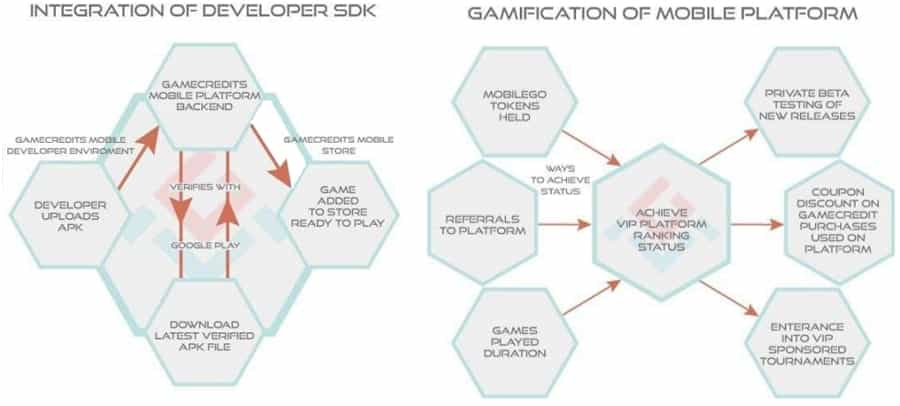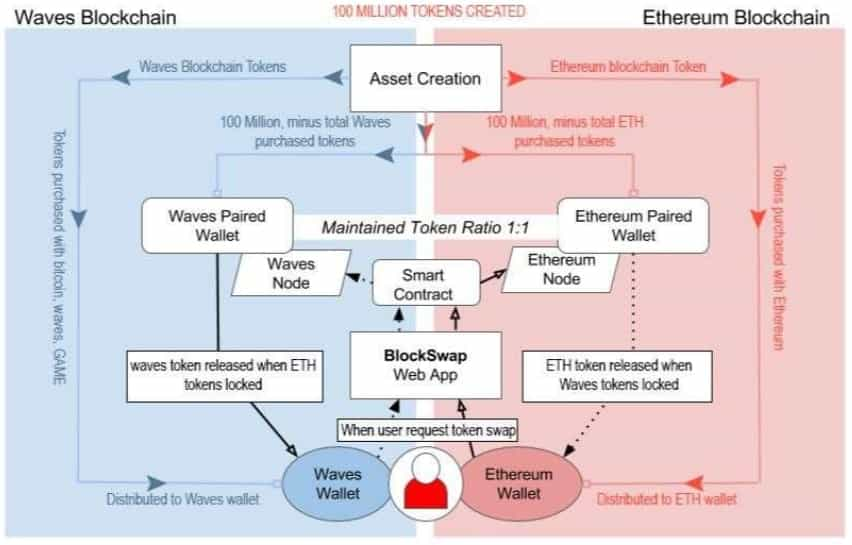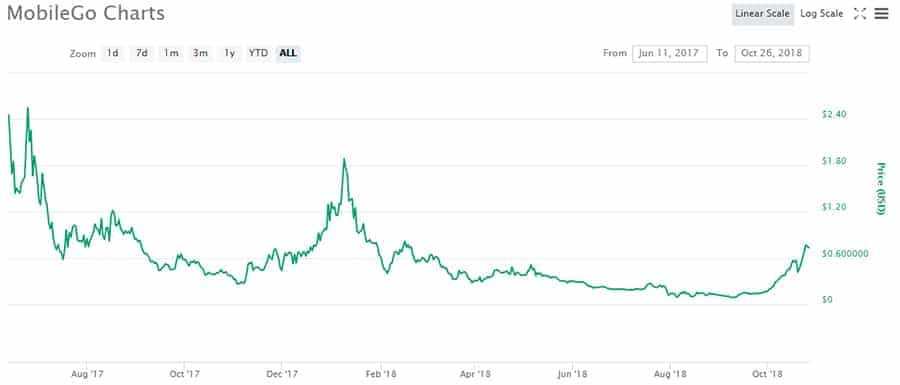MobileGO (MGO) Review: The Mobile Gaming Blockchain
The growth of cryptocurrencies has created new groups of coins that are looking to overtake billion dollar global industries.
One of those industries that is especially suitable for the widespread adoption of cryptocurrencies is the video gaming industry. So, it isn’t surprising that there are a number of projects looking to take on this niche and introduce a gaming coin.
One of those projects that’s been setting itself apart as a pioneer in the video gaming niche is MobileGo, which recently broke into the top 100 coins by market cap as it has seen tremendous price growth in October 2018.
In this MobileGO review, we will take an depth look into the project and give you everything you need to know. We will look at the underlying technology, team members and MGO token prospects.
What is MobileGo?
MobileGo is a game coin with a dual blockchain token that uses both Ethereum and Waves. It was launched quite recently, with its ICO taking place in May 2018, and is the sister currency of the more well known GameCredits (GAME). GAME has been around since 2014 and is considered to be the grandfather of gaming coins, so MobileGo has a good family history.

MobileGo was developed as a means to develop decentralized gaming applications, and is expected to play a major role in eSports betting. One use will be to incentivize gamers with rewards for loyalty and participation. It was also meant to be used in the GNation mobile app store, but has since spread further as you’ll learn later in this article.
The MGO token has an extremely broad scope of application, providing numerous benefits for different populations. For gamers, it will facilitate peer-to-peer matchplay and decentralized tournaments, serving both as a match reward and an entrance fee. Moreover, token holders will be able to earn additional discounts for purchasing in-game content.
How MobileGo Works
When MGO was launched it did so with a total supply of 100 million tokens, but in reality there are 200 million tokens. That’s because the tokens exist on both the Ethereum (EMGO) and WAVES (WMGO) platforms.

Participants in the ICO were able to choose to receive either EMGO or WMGO, with the counterpart being frozen on the other blockchain. This means if 65% of all tokens were claimed on the WAVES blockchain there would be a corresponding 65 million tokens frozen on the Ethereum network.
However recently the management and development team at MobileGo changed and this has caused them to make the decision to move all of the tokens to the Ethereum platform. As of early October 2018 they are beta testing swaps, and once the swap system is bug free they will offer swaps of all the WMGO tokens to EMGO tokens and will proceed with only MGO tokens on the Ethereum platform.
The MGO token is deflationary as no more than the initial 100 million will even be minted.
MobileGo’s Role in Gaming
It is true that most of the features of MobileGo remain in development, but recent partnerships have put it in a very promising position to see its global usage increase dramatically.
Here are the future developments being worked on by the MobileGo team:
- Ecosystem Web Portal: A web interface and an ecosystem representation layer for the end-user (gamer). With this product, the user gets access to the largest part of the ecosystem functionality. All in one place, with a unified experience across all platforms (PC/mobile).
- eSports Platform: A set of back-end services and front-end deliverables for the end-user, which ensures a competitive experience in mobile/HTML5/PC games. Also, a set of APIs and SDKs that helps the publisher (game developer) to integrate their content (games) into our platform.
- Computing Platform: A set of back-end services and end-user products, which helps the user to get into our computing network and share their PC hardware with the network for reward. Right now it is all about mining.
- Core Services: Common services used by all products inside the ecosystem (e.g. User Service, API gateway, Payment Service, etc.). Also, some common business logic for charity and ecosystem gamification (tasks, achievements, etc.).
- Publisher’s Account: A product that helps businesses (publishers) to work with the ecosystem, to upload and customize content (games and marketing materials that we publish on the ecosystem web portal), and to do integrations.
Recent Partnerships
In addition, the game development software Unity has been working to integrate MGO implementation in Unity games with one click. This would be huge since roughly half of all mobile video games are powered by Unity. This was intended to go live this past summer, but seems to have been delayed, perhaps due to the changes in the management and development team at MobileGo.
The latest big news out of MobileGo came in late October, when gaming development suite creator Xsolla added MobileGo (MGO) and GameCredits (GAME) as available payment methods for their mobile and PC gaming partners.

This means game developers are now able to receive royalties in MGO tokens. Payouts will be made on a sliding scale percentage as determined by the developers themselves. This also means that Xsolla could become another way to purchase cryptocurrencies using Paypal, in a round-about way.
With Xsolla already supporting more than 700 different payment methods, the addition of MGO and GAME is actually a pretty big deal as Xsolla hasn’t previous had support for cryptocurrencies. Gamers now have more choices in paying for games and in-game merchandise. And the Xsolla tools are available in more than 200 countries and territories, greatly expanding the reach of MobileGo.
MGO Price History
The MGO token raised more than $50 million in its ICO in May 2017, making it the second largest ICO of all time at that time. Unfortunately, following the ICO many investors lost faith in the project as the management and development team was uncommunicative and less than transparent.
After hitting a post launch high of $2.60 in June it fell to nearly $0.20 in November 2017. It rebounded along with the rest on the market in December/January, but by September 2018 the token had fallen to nearly $0.09 and the project looked as if it was dying.
Fortunately the project was reborn in October 2018 with the reshuffling of the management and development team at MobileGo. This change seems to have breathed new life into the project, and into the token.

The first announcement was that the WAVES token was being dropped due to technical issues in working on that blockchain. As of late October 2018 the team is testing a swap platform, and once it is ready all the WMGO will be swapped for EMGO. The change in management saw the MGO token double in value from the last week of September to October 2, but that was just the start.
On October 5 the team announced the MGO token had been added to Bitfinex and Ethfiniex. By October 13 the price of MGO was above $0.45, for a nearly 500% return since the change in the management team. Further exchanges were added and you can buy MGO on Cryptopia and HitBTC for example.
The project gained huge support from the Chinese gaming communities which has no doubt played an important part in pushing the token in the top 100 market cap list.
Conclusion
With the video game industry worth more than $1 billion annually it shouldn’t be difficult for MobileGo to see insane growth. Just 1% of that market will net $100 million, and with mobile gaming growing so dramatically that seems like a small goal.
The rebirth of the project seems to have brought major partnerships and developments, and the project is back on track. Hopefully it will remain that way and continue to grow. MobileGo was once a wildly popular project, and can be again with transparency and hard work.
It should also benefit from the increasing number of gaming events being sponsored by GNation, and by the new ability to mine GN Gold, which is used to join tournaments that pay out in MGO.
The end of October is also slated for the release of Pixel Wars, a mobile MMORPG that has been highly anticipated by gamers. Little has been leaked regarding the game, but after release it should benefit from the large marketing and advertising budget stored since the massive ICO haul.
While the MGO token has made large gains already in October it remains below its all-time high, and could see a massive pump if that Pixel Wars game is as excellent as is hoped.
In any case, the recent change in management and increased communication and transparency from the MobileGo team is a step in the right direction.
Disclaimer: These are the writer’s opinions and should not be considered investment advice. Readers should do their own research.
